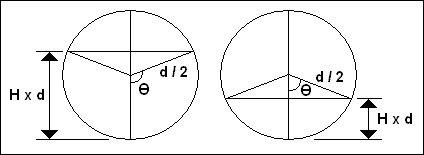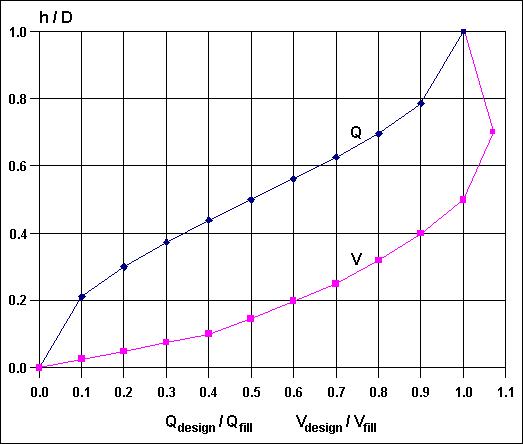
| Duration ( h ) | Total rainfall ( mm ) | Intensity ( mm / h ) |
| 0.1 | 4.85 | 48.5 |
| 0.5 | 9.08 | 18.2 |
| 1.0 | 11.59 | 11.6 |
| 1.5 | 13.30 | 8.9 |
| 2.0 | 14.64 | 7.3 |
| 3.0 | 16.72 | 5.6 |
| 4.0 | 18.34 | 4.6 |

| Type of surface | C |
| Lawns | 0.10 - 0.20 |
| Streets | 0.70 - 0.95 |
| Residential areas ( flat ) | 0.30 - 0.50 |
| Residential areas ( hilly ) | 0.50 - 0.70 |
| Urban areas | 0.70 - 0.90 |
| Industrial areas ( light ) | 0.55 - 0.65 |
| Industrial areas ( heavy ) | 0.60 - 0.80 |
| Pipe diameter ( mm ) | Minimum gradient ( m / m ) | Flowrate ( m 3 / s ) |
| 100 | 0.0111 | 0.006 |
| 150 | 0.0064 | 0.013 |
| 200 | 0.0044 | 0.024 |
| 225 | 0.0038 | 0.030 |
| 250 | 0.0033 | 0.037 |
| 300 | 0.0026 | 0.053 |
| 375 | 0.0019 | 0.083 |
| 450 | 0.0015 | 0.120 |
| 525 | 0.0012 | 0.163 |
| 600 | 0.0010 | 0.212 |
| ( Based on self cleansing velocity of 0.75 m / s and a Manning's coefficient n = 0.012 ) | ||


 For more info about the "Sanitary Sewer Design"...
For more info about the "Sanitary Sewer Design"...
